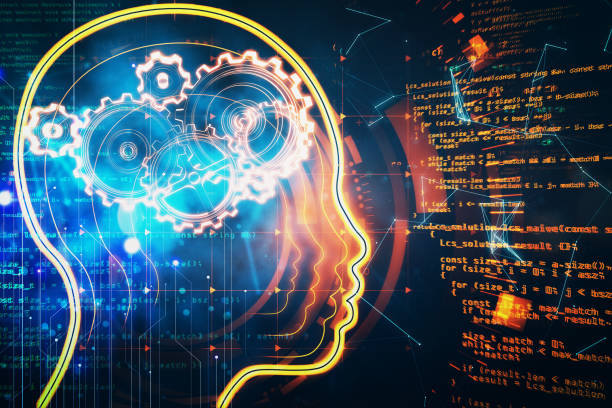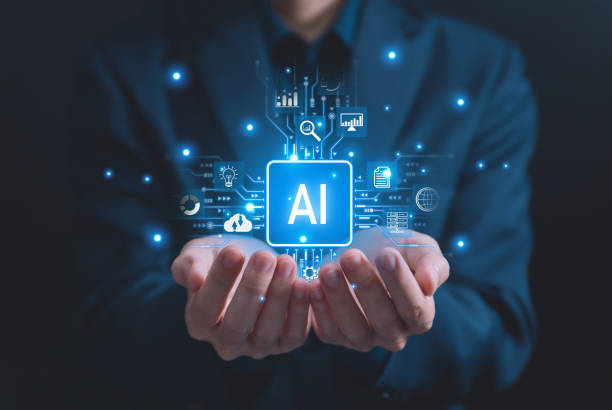What is an Artificial Intelligence Robot? A Comprehensive Definition
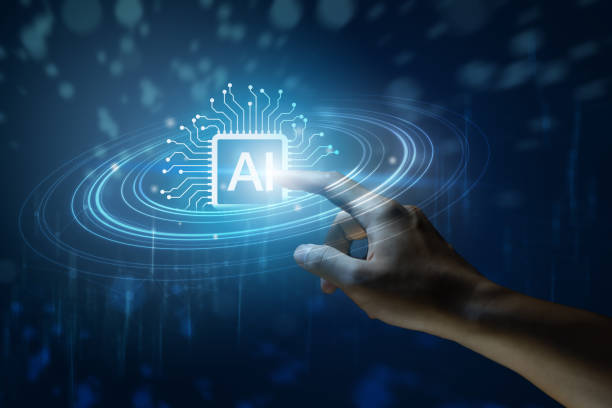
#Artificial Intelligence Robot is a combination of two important technology fields: robotics and artificial intelligence.
In short, an AI robot is a physical or virtual machine that uses #AI algorithms to perform tasks that usually require human intelligence.
These tasks include learning, reasoning, problem-solving, understanding natural language, and environmental perception.
AI robots can be used in a wide range of industries and applications, including manufacturing, healthcare, customer service, education, and even entertainment.
The main difference between a regular robot and an AI robot is the level of #automation and independent decision-making ability.
A regular robot usually operates according to a predetermined program, while an AI robot can make its own decisions and adapt its behavior based on the data it receives.
This makes AI robots much more flexible and efficient than traditional robots.
For more information, you can refer to this Wikipedia link.
In other words, an AI robot tries to think and act like a human.
Tired of losing customers due to poor e-commerce website design? Solve this problem forever with Rasaweb!
✅ Increase sales and visitor-to-customer conversion rate
✅ Smooth and attractive user experience for your customers⚡ Get a free consultation
Main Components of an Artificial Intelligence Robot
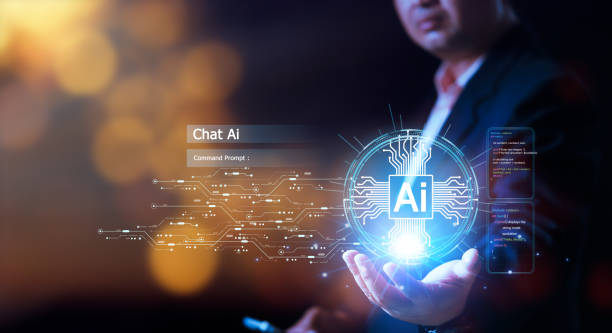
An AI robot consists of several key components that work together to enable intelligent tasks:
- Sensors: Sensors collect information about the surrounding environment.
This information can include images, sounds, temperature, pressure, and other sensory data. - Processor: The processor analyzes the data collected by the sensors and makes the necessary decisions based on AI algorithms.
- Actuators: Actuators allow the robot to move and interact with its surrounding environment.
These actuators can include motors, arms, wheels, and other mechanical components. - AI Algorithms: These algorithms are the thinking brain of the robot and are responsible for learning, reasoning, and problem-solving.
AI algorithms can include neural networks, machine learning algorithms, and reasoning algorithms.
The cooperation of these components allows the AI robot to function effectively and perform complex tasks.
For example, in a self-driving AI robot, sensors scan the surrounding environment, the processor analyzes the information, AI algorithms determine the best route, and actuators guide the car along that route.
Types of Artificial Intelligence Robots, Applications and Examples
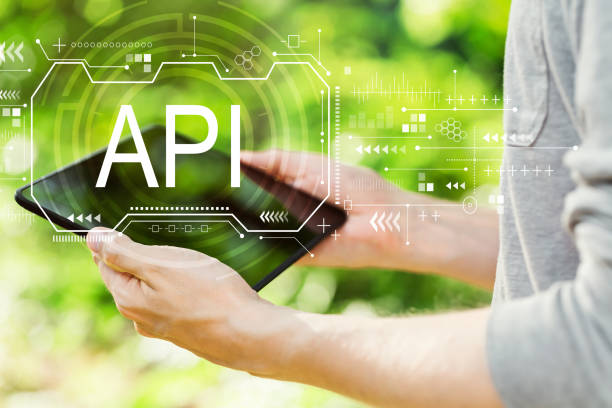
AI robots are designed and manufactured in various types, each suitable for specific applications.
Some of the common types of AI robots are:
- Industrial Robots: These robots are used in factory production lines to perform repetitive and dangerous tasks.
For example, robots that assemble parts or perform welding. - Service Robots: These robots are designed to provide services to humans.
For example, cleaning robots, elderly care robots, and delivery robots. - Military Robots: These robots are used on battlefields to perform tasks such as reconnaissance, bomb disposal, and transportation.
- Space Robots: These robots are used to explore space and conduct scientific research.
For example, Mars rovers and satellites. - Personal Robots: These robots are designed to help people with everyday tasks.
For example, home robots, toy robots, and educational robots.
#Artificial Intelligence robots cover a wide range of applications, and as technology advances, they are expected to play a more important role in our lives.
These robots can help us perform difficult and repetitive tasks and improve our quality of life.
| Robot Type | Application | Example |
|---|---|---|
| Industrial | Performing repetitive and dangerous tasks in production lines | Part assembly robot |
| Service | Providing services to humans | Cleaning robot |
| Military | Performing dangerous tasks on battlefields | Bomb disposal robot |
| Space | Exploring space and conducting scientific research | Mars rover |
| Personal | Helping people with everyday tasks | Home robot |
Challenges and Limitations of Artificial Intelligence Robots
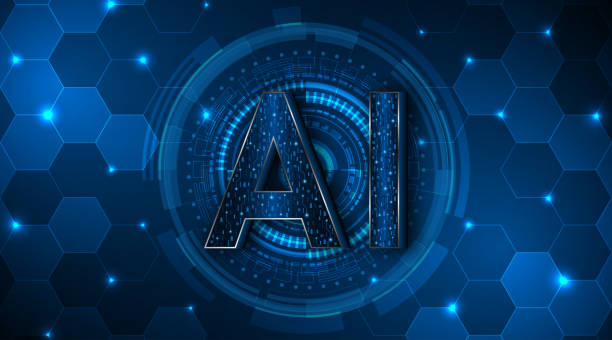
Despite the high potential of AI robots, there are also challenges and limitations in the path of their development and use:
- High Cost: Designing and building AI robots is usually very expensive.
- Complexity: Developing and maintaining AI robots requires a high level of expertise and technical knowledge.
- Ethical Issues: The use of AI robots can create various ethical issues, such as job loss, privacy, and accountability.
- Security: AI robots can be targeted by cyber attacks and misused.
- Reliability: AI robots may not function correctly in unexpected situations.
Addressing these challenges and limitations is essential for the widespread and safe use of AI robots.
Researchers and experts are working to solve these problems by developing new technologies and providing ethical and security solutions.
AI robots are advancing, but there is still a long way to go.
Are you worried that your company’s old website is scaring away new customers? Rasaweb solves this problem by designing a modern and efficient company website.
✅ Increases your brand credibility.
✅ Helps to attract targeted customers.
⚡ Contact Rasaweb for a free consultation!
Future of Artificial Intelligence Robots: Possible Impacts
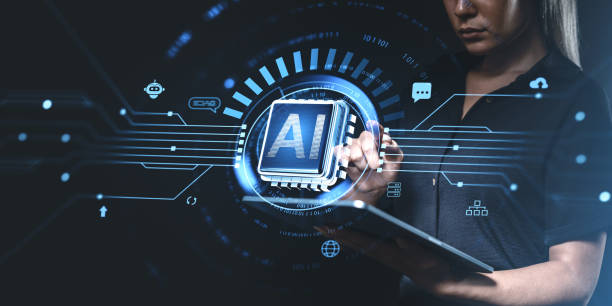
Predicting the future of AI robots is difficult, but given the rapid advances in this field, we can expect to see significant developments in the near future:
- Increased Automation: AI robots will play a more important role in automating various industries.
This can lead to increased productivity and reduced costs, but it may also lead to job losses. - Improved Healthcare Services: AI robots can help in diagnosing diseases, performing surgery, and providing healthcare to people.
- Development of Smart Cities: AI robots can help in managing traffic, collecting garbage, and providing municipal services to citizens.
- Space Exploration: AI robots can play an important role in exploring other planets and conducting scientific research in space.
- Everyday Life: AI robots can help people with everyday tasks such as cooking, cleaning, and caring for children.
However, it is important to remember that the development of AI robots should be done considering ethical and social issues to prevent negative consequences.
AI robots have the potential to create big changes, but they must be managed properly.
Skills Needed to Work with Artificial Intelligence Robots
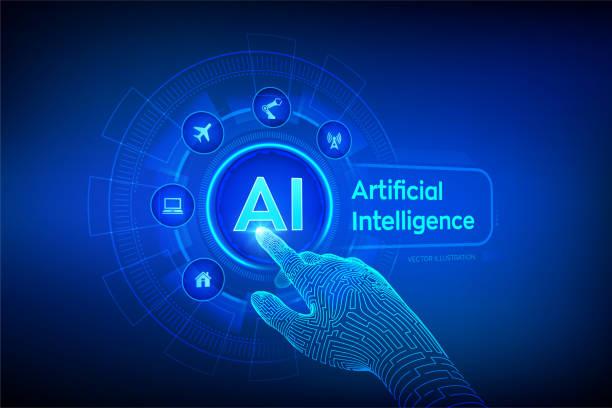
With the increasing use of AI robots, the need for specialists who can work with these robots is increasing.
Some of the skills required to work with AI robots include:
- Programming: Ability to write code to control and program robots.
- Mathematics and Statistics: Knowledge of mathematics and statistics to understand and develop AI algorithms.
- Robotics Engineering: Knowledge of robotics engineering to design, build, and maintain robots.
- Artificial Intelligence: Knowledge of artificial intelligence to develop machine learning algorithms, neural networks, and other AI techniques.
- Problem-Solving: Ability to solve complex problems and find innovative solutions.
In addition to these technical skills, soft skills such as critical thinking, creativity, and teamwork are also essential for working with AI robots.
If you are interested in working in this field, you can prepare yourself for the future by learning these skills.
AI robots need skilled specialists.
The Role of Artificial Intelligence Robots in Various Industries

AI robots are currently used in various industries and play an important role in improving efficiency and increasing productivity:
- Manufacturing: AI robots are used in production lines to perform tasks such as assembly, welding, and quality inspection.
These robots can work around the clock without fatigue and have high accuracy. - Healthcare: AI robots are used in disease diagnosis, surgery, nursing, and rehabilitation.
These robots can help doctors and nurses provide better services to patients. - Customer Service: AI robots are used in call centers, chatbots, and service robots to answer customer questions and provide support.
- Transportation: AI robots are used in self-driving cars, drones, and intelligent transportation systems.
These robots can help reduce accidents, improve traffic, and reduce air pollution. - Agriculture: AI robots are used in precision agriculture, harvesting, and monitoring farms.
These robots can help increase production, reduce water and fertilizer consumption, and improve product quality.
As technology advances, the role of AI robots is expected to expand in various industries.
These robots can help us perform tasks that are difficult, dangerous, or repetitive for humans.
| Industry | Role of AI Robot | Example |
|---|---|---|
| Manufacturing | Performing repetitive and dangerous tasks | Part assembly |
| Healthcare | Helping diagnose and treat diseases | Robot-assisted surgery |
| Customer Service | Answering customer questions | Chatbot |
| Transportation | Autonomous driving | Self-driving car |
| Agriculture | Monitoring farms | Precision agriculture |
Comparing Artificial Intelligence Robots with Other Technologies

AI robots have fundamental differences from other technologies.
For example, a regular robot can only perform tasks that it has been programmed for, while an AI robot can learn, reason, and decide.
Also, AI robots are different from intelligent software systems such as virtual assistants and search engines.
AI robots have a physical body and can interact with their surrounding environment, while intelligent software systems only exist in the digital world.
These differences make AI robots have unique applications.
However, these technologies can also complement each other.
Are you worried that your company’s old website is scaring away new customers? Rasaweb solves this problem by designing a modern and efficient company website.
✅ Increases your brand credibility.
✅ Helps to attract targeted customers.
⚡ Contact Rasaweb for a free consultation!
Important Tips for Choosing and Using Artificial Intelligence Robots
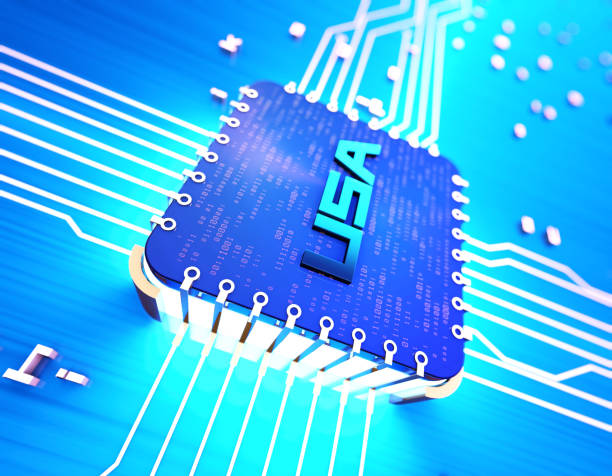
If you are planning to purchase or use an AI robot, you should pay attention to the following points:
- Define Needs: First, you need to accurately identify your needs.
What tasks do you want the robot to perform? What is your budget? What skills do you have to work with the robot? - Research and Review: Before buying, research different types of AI robots and read user reviews.
- Choose a Reputable Seller: Buy the robot from a reputable seller who offers good after-sales service.
- Training and Support: Before using the robot, watch the necessary training and use the seller’s technical support.
- Security: Protect the security of your robot and avoid installing malicious software.
By following these tips, you can choose a suitable AI robot and use it effectively.
AI robots can help you with various tasks, but they must be chosen and used correctly.
Future Research of Artificial Intelligence Robots: Opportunities and Threats
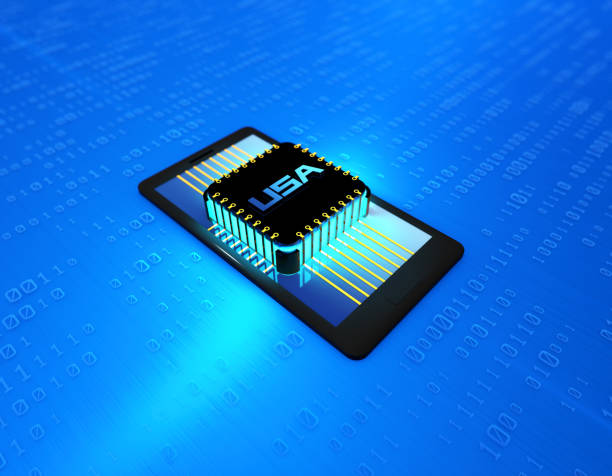
The future of AI robots brings both opportunities and threats.
On the one hand, this technology can help solve major global problems such as climate change, diseases, and poverty.
On the other hand, AI robots can cause job losses, increase inequality, and threaten privacy.
To use AI robots responsibly and ethically, we must pay attention to these opportunities and threats and develop appropriate policies and regulations.
AI robots are a powerful tool that can be used for good or evil.
Ethical issues in this field are very important and should be given special attention.
Accountability, transparency, and fairness should be considered in the development and use of AI robots.
Frequently Asked Questions
| Row | Question | Answer |
|---|---|---|
| 1 | What is an Artificial Intelligence Robot? | An AI robot is a machine capable of understanding, reasoning, learning, and problem-solving, and can perform complex tasks with relative autonomy. |
| 2 | What are the most important applications of AI robots? | The main applications include industrial manufacturing, customer service (chatbots), medicine and surgery, autonomous transportation, space exploration, and military affairs. |
| 3 | What is the main difference between an AI robot and a regular robot? | A regular robot only follows programmed instructions, while an AI robot can learn from data, make decisions, and adapt to new environments. |
| 4 | How do AI robots learn? | They identify patterns and improve their performance through machine learning algorithms (such as deep learning, reinforcement learning) and processing vast amounts of data. |
| 5 | Can AI robots have emotions? | Currently, AI robots do not have real emotions in the human sense. They can mimic or detect emotions, but they do not understand and experience them. |
| 6 | What are the current limitations of AI robots? | Limitations include the need for large amounts of data, the inability to understand abstract concepts, the lack of real creativity, ethical issues, and the challenges of generalizability in new environments. |
| 7 | What is the role of AI in the development of Humanoid robots? | AI helps humanoid robots to walk, maintain their balance, understand the surrounding environment, interact with humans, and perform complex tasks. |
| 8 | How is the future of AI robots predicted? | It is predicted that AI robots will become smarter, more autonomous, and capable of performing more complex tasks in everyday life and industry, and their interaction with humans will increase. |
| 9 | Can AI robots replace all human jobs? | It is unlikely that all human jobs will be replaced. Robots will take over many repetitive and dangerous tasks, but jobs that require creativity, empathy, and ethical judgment will remain. |
| 10 | What ethical and social challenges arise with the expansion of AI robots? | Challenges include issues related to privacy, data security, ethical decision-making by robots, impact on employment, and accountability in the event of errors. |
And other services of Rasa Web Advertising Agency in the field of advertising
Intelligent Custom Software: A new service to increase sales by designing an attractive user interface.
Intelligent Direct Marketing: A combination of creativity and technology to increase click-through rates by designing an attractive user interface.
Intelligent Marketplace: An effective tool to improve SEO ranking with the help of Google Ads management.
Intelligent SEO: A new service to increase digital branding by customizing the user experience.
Intelligent Social Media: Professional optimization to attract customers using an attractive user interface design.
And more than hundreds of other services in the field of internet advertising, advertising consulting, and organizational solutions
Internet Advertising | Advertising Strategy | Advertorial
Resources
What are Intelligent Chat Robots?
,Everything You Need to Know About Intelligent Robots
,How Can an Intelligent Robot Improve Digital Marketing?
,What Applications Do Intelligent Robots Have?
? For visibility in the digital world and reaching the peak of success, Rasaweb Digital Marketing Agency is with you. We, by offering specialized services including professional WordPress website design and targeted SEO, will take your business to the place it deserves. Contact us for a free consultation and start your business’s digital transformation.
📍 Tehran, Mirdamad Street, next to Central Bank, South Kazerun Alley, Ramin Alley No. 6
“`

